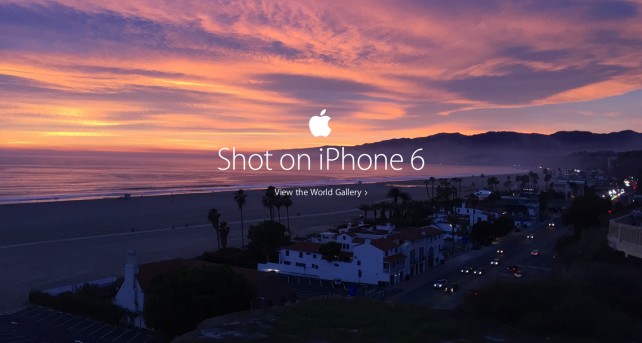How To Achieve Marketing Excellence: How Apple products transcend the laws of supply and demand
“Apple can’t be beat because they invent the game. Apple has a knack for making products that customers don’t know they need. And when it doesn’t invent truly revolutionary products, it creates truly innovative ones.”
AUTHOR’S NOTE: As a marketer, I look up to Apple. They have achieved marketing excellence being the most powerful and influential brands in the world. We have a lot to learn from this marketing giant. The idea for this blog came to me when I was renewing my cellphone contract. There was no question, I would be getting the new iPhone 6 – despite it costing hundreds of dollars more, I wouldn’t even consider another smartphone. Why? That’s the question I hope this blog will answer.
Ever wonder how Apple can sell its newest iPhones for $1000 when other companies have a hard time giving their smartphones away for free?
It might be for the same reason that people sleep in tents outside of Apple stores to be the first to get their hands on a new Apple product.
Apple seems to transcend the typical supply and demand model that is taught in first year economics classes. Its product pricing doesn’t reflect the change in the supply or demand of its products. Its product prices are always hyper-inflated compared to competitor offerings, yet Apple sells just as many, if not more units than the latter.
Seriously, what’s the deal?
Why, Apple? Why?!
Discrepancies between economic theory and reality.
Apple’s marketing prowess enables the company to defy traditional economic theory. Why? Macroeconomists has yet to include marketing theorems and business strategy in their economic algorithms. Allow me to explain:
Most companies use pricing tactics that optimize sales revenue. These traditional pricing models have been developed by, you guessed it, economists. There is a big problem here.
The supply vs. demand argument can in no way define an infinitely complex marketplace. In other words, supply, demand, price and quantity are only four inputs that explain consumption behaviour.
“These traditional pricing models have been developed by, you guessed it, economists. There is a big problem here.”
There are many other factors, like brand desirability, product attributes/features, competitive offerings, etc. that significantly influence consumer behaviour and are more important to consumers than price.
So let’s get back to the main question at hand. How can Apple command insane prices and still generate so many sales? There are many reasons, but here are the main ones:
Apple makes amazing products.
All Apple products are beautifully designed in terms of both esthetics and engineering. They are simple, elegant, hard to fault, have incredible build quality and are seamlessly integrated with one another. Apple makes products that are so intuitive that your grandma can use it right out of the box. Yet, they are so attractive that every teen wants one for Christmas. This brings me to the next point:
Apple has an extremely desirable brand image.
Apple has created a brand that consumers desire. Apple’s brand image and brand positioning is cool, trendy, modern, amazing, impressive, innovative, artsy, fun – all characteristics that most consumers value and either identify with on a personal level, or want to be associated with in social contexts.
Let’s be clear about something. Apple’s brand is desirable insofar as its products are great. If Apple started to make horrible looking products, it would suffer to maintain the artsy brand image that it has established. So, these first two points (product and brand) go hand in hand. Apple’s brand personality befits the products it designs and vice-versa. The synergy and consistency between its product design and brand positioning contributes to the strength of Apple’s brand image and makes it extremely desirable.
Apple does marketing tastefully.
Contrary to a sleazy used car salesman, or a desperate telemarketer trying to reach a sales quota, Apple sells products in a tasteful way. Their marketing is so down-to-earth that you don’t even realize that it’s a sales pitch all the same. This is magical and companies that emulate this approach have achieved great success.
In this ad, Apple shows rather than tells what the iPhone 6 can do. Again, tasteful marketing.

Apple is a market leader.
Apple can’t be beat because they invent the game. Apple has a knack for making products that customers don’t know they need. And when it doesn’t invent truly revolutionary products, it creates truly innovative ones. The computer mouse, iPod, iTunes, the tower-less iMac computer, iPad, iPhone, AppleTV, iWatch, need I say more?
When Apple creates a new product, they think of everything just to ensure that they do it right the first time around. This detail-centric corporate culture is one of the many reasons why Apple products are virtually immune to copycat competitors. Yet another reason why they have remained a market leader for over 13 years now. And when you are a market leader, you can command premium prices.
So, what can you take away from this?
Well, the market clearly admires Apple’s way of doing business. Not to say that you should copy Apple, but you can look at what any great company (big or small) is doing well and apply similar principles and practices to your business. We do it and it works well for us!
Be in the know
(without having to remember to be in the know).
Our latest blogs go well with espresso and a warm croissant! Get them sent conveniently to your inbox when they are hot off the press. Subscribe to get Smarketing.

Like this post? Then you'll enjoy these.
Great Pricing Tactics – Part 2
Anything that directly affects how much you earn is worthy of your time, careful consideration and testing […] there is no stronger determinant of revenue than price.
How to tell if you are doing social media correctly?
Everyone does social media differently. Some people break all the rules and find great success. For the vast majority of us, social success takes a little longer. We’ve got some tried and true suggestions on how you can determine whether your business is on the right path.
Smart September Start: Marketing ideas that will make a lasting impression this fall.
You’re probably looking for ways to have a great start to your September, professionally speaking? I’ve coined this the “Smart September Start”. And I hope to inspire you with marketing ideas that will ensure that your business makes a lasting impression this September.
Meet the author.

Taro Abarbanel-Uemura
Marketing Strategist
Meet Fortified Marketing's founder and lead marketing consultant. Taro loves reading fascinating articles on various marketing-related subjects, just as much as he enjoys writing about them. When he isn’t savouring a latte while working on his newest blog post, he can be found at a coffee shop in Ottawa's Little Italy, or marathoning shows and documentaries on Netflix.


